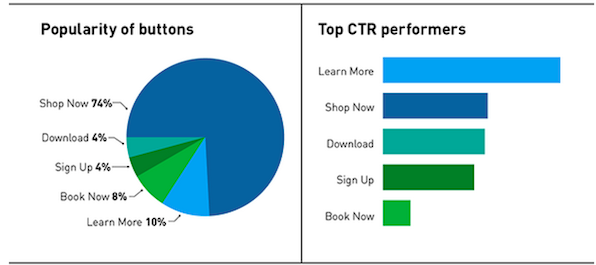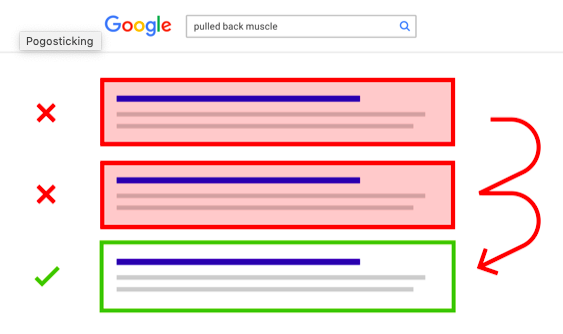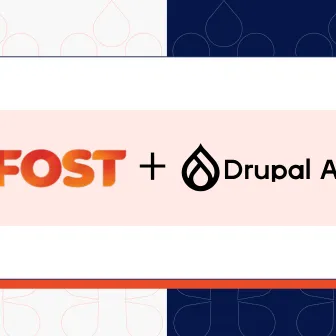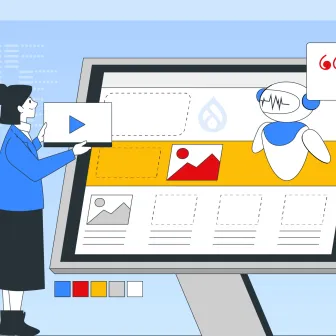Given the state of SEO in recent years, there are a lot of things which get changed. As the ranking factors change, the CMS strategies should differ as well. Let’s break down the most common Google ranking factors in 2019:
Breaking down the factors into different categories for a far better understanding and prioritisation of your strategy.
A few must-haves, modules and to-dos
Utilize the PathAuto Module
Well-structured URLs help enormously in SEO. PathAuto helps your Drupal website with structuring the URLs. In order to help your content rank well or get an edge over other similar content, using this module is crucial.
Using this module, you needn’t manually generate correct URLs for every node. It automatically generates URLs supported specific to the set patterns by system admins on the Drupal backend, they are highly customisable as well.
The URLs therefore generated are human readable and provide a sense of navigation as well which proves to be helpful in many complex website cases. This module may do wonders to your SEO practices. You should check back with your Drupal Backend team and make this insertion done right.
Add the SEO checklist module
One interesting functionality in the SEO checklist module is the time stamp functionality which keeps a track of all the changes made to the published content, it places a date and time stamp for each time.
The Drupal SEO Checklist uses best practices to run a thorough check on your website's search engine optimization capabilities. It creates a todo list of functional modules and tasks which need to be undertaken to enhance the website's SEO. It is also regularly updated by the community to provide you with the best trends and fresh practices to make search engine optimization a hassle-free job.
It breaks the tasks down into functional needs like Title Tags, Paths, Content and much more. Next to each task is a link to download the module from Do and a link to the proper admin screen of your website so that you can configure the settings perfectly.
Redirect Module
Let’s assume a situation where you make a change to the content on some URL. It will definitely require you make some change to the URLs are already ranked on search engines - this means that if any user were to click on the ranked URL, they would be directed to a link that is no longer available.
This would lead to a user diverging from your site to another in search of information. To prevent this, we have the redirect module which helps in providing automated redirects to helpful URLs while also doing you the favour of eliminating dead or forgotten links from your resourceful website.
XML Sitemap & Simple XML Sitemap
A website’s XML sitemap is like the directory of that website. In it is defined the website’s structure, such as its URLs and the relationships between them. This module creates the sitemap of your content which is referred by search engines. This is by far considered as a best practise for your SEO efforts. An XML sitemap is a specially formatted summary of each piece of content on your website.
On the other hand, Sitemaps generated by this module adhere to the new Google standard regarding multilingual content by creating hreflang sitemaps and image sitemaps. Google bots will thank you later.
The module will help you create a well formatted XML sitemap which always helps you in generating awareness of all the pages on your website. This further helps you in your SEO efforts as nothing can be boosted without gaining some basic recognition by search engines. You can allocate all the pages you wish the search engines to crawl.
What are the repercussions of not having a sitemap in place? Given your website is very resourceful and produces helpful content for the readers very frequently, without a sitemap or direction-to-crawl, the search engines will often miss out of important pages to index. Sometimes, the crawler may even miss out an entire section or category on your website. This means losing an entire category of pages. We can’t put a number to that crawl-miss but every page contributes greatly to the traffic and seo boost you gain over time. So, missing out on any page sounds like a lost shot.
Meta Tag
Provide more metadata information to every of your pages using the metadata module. Examples of metadata being meta descriptions, title tags, categorical tags, page titles. These elements of your website's page will be crawled and accessed by Google Crawlers to rank your page on the SERPs.
While Drupal natively doesn’t allow editable meta tag fields, all of that can be done with the Metatag module. Using this module, the user can set meta tags for users, taxonomy, nodes, views etc.
Linkit Module
The Linkit Module provides an easy interface for creating links in your WYSIWYG content editor by using an autocomplete field. It makes sure that all the links that you add to your content are well-formed, up to date and automatically use the proper path. Properly formed and placed links are a powerful strategy for any SEO campaign.
Do check out this Comprehensive Guide to Drupal SEO.
Site & Page Level factors
Site Architecture
Drupal Site Architecture plays a big role in defining the magnitude of SEO advantage your site can reap. Generally, a Silo structure considered a good site architecture. What it does is, it helps Google thematically organize your content. It can also help Googlebot access and index all of your site’s pages recurrently.
Many people make the mistake of not paying due attention to their site architecture during setting it up. Which later becomes a headache for many resourceful websites.
The freshness factor
It is officially stated by Google that the more often your indexed website keeps updating content, the better gets the crawling by google bots. Whether it may be any form of helpful content you can produce. As long as it provides you the fresh edge over your competitive peers in the market.
Talking about the frequency, you can give a refresh to your old blogs by adding a fresh cut of content which may add to the usefulness of the blog or if some information is outdated, you can replace it with the latest information. This practise generally helps in giving your piece of content a sense of freshness and helps welcome readers to utilise the refreshed content.
Sitemap & SSL Certificate
Sitemap is different from site architecture, and it plays a tremendously crucial role in deciding your site’s tree or hierarchy. Sitemaps are important in various cases, such as:
- The pages on your website have been created dynamically. (e.g. some e-commerce sites)
- Your website is not well interlinked
- Your site has few external links or is new (a newly developed site just set “live”)
- Your site is large and/or has lots of archived content that may not be well-linked
On the other hand, an SSL certificate is extremely necessary as it’s impact on the ranking signals have been confirmed by google. Not having an SSL certificate means inability to establish a secure connection. Which in layman terms is; company or organisation information not being digitally present on any cryptographic key.
Not having the green-lock-icon on visiting a brand or website kind of makes us insecure about our data; if there is to be provided any. This means a lot of brand imagery is at stake due to that little green lock. On the secure hand, it also encrypts sensitive user information and prevents the website from being intruded by cyber bad boys.
Site Downtime
Frequent downtimes resulting from server issues or maintenance practises result in bad indexing or deindexing of your website. There have been various cases where downtime has affected a site's rankings. Your site downtime is never affected
According to Matt Cutts, one day of time is no big thing, it is tolerable but from various experiences, website's search rankings drop after a straight six-hours of downtime on an average of 30% and are supposed to remain the same until a next google refresh takes place.
Here are somethings you can do to prevent a potential site downtime:
- Keep you Drupal site up-to-date. Don’t miss out on the frequent updates provided by the Drupal community. They range from security to bug fixes and performance enhancers.
- CDNs have proven to be very helpful when it comes to preventing downtime due to overloading. They often act as a buffer during times of peak activity or engagement on the website for some reason. They are known to deter DDos attacks at best. Some CDNs are free to try out in the market and can better your hosting environments.
- Opt for a really good hosting service and website monitors for situations where it goes down and you get no clue. Choosing a hosting service will generally depend on the amount of traffic you receive and expect in the future. Talk things out with your marketing team and boil it down to serve the least of their expectations.
On Page Factors - Things you shouldn’t miss out on
You should meet the web content accessibility guidelines. Perceivable, Operable, Understandable and Robust. Your should look forward to having a POUR website. Try to make sure that all the accessibility related guidelines are followed during the curation of your site or even later in the phases.
Try to not miss out on anything. Having a website which meets nearly every accessibility standard is crucial to capitalising on your SEO efforts.
Your Drupal website should be mobile friendly in order to not lose out on the abundant mobile traffic. Try to make the mobile experience of your website as user friendly as possible. Since April 2015, in what search-engine-optimizers have dubbed Mobilegeddon, Google officially started rewarding the search rank of mobile-friendly sites and penalizing sites that were not mobile-friendly.
Internal links pointing to your page with natural anchor text. When pointing to your internal pages or products, generally in cases of e-commerce, you can link them. Following are some characteristics of a good internal linking strategy or practise:
- It should be succinct - describe the link in the best possible concise manner. It should also propel the users to at least hit the link.
- Must have some relevance to the linked page
- It should not be overstuffed with keywords. Stay low-key!
- It should be a little offbeat or say not extremely generic
Schema Markup - This is extremely necessary to help the search engines know what your content is about and what does it have for the global traffic. In the age of Hummingbird and RankBrain like algorithms, schema markup is especially important in the age of. The way search engines solves or interprets any queries context will ultimately define the quality quotient of the rendered SERP results. To provide contextual sense to any of your webpages, enhance your schema metadata.
Include Frequently Asked Questions on your website if you are showcasing a product or a service. It further helps in giving you the edge for conversion purposes.
1. It answer some of the most interpreted questions and provides the users with enough content to dig a little more. They could probably never feel the need to contact support.
2. It allows for more content questions to be shown on the page, as there are no answers to take up a lot of space.
3. It’s great for internal linking/SEO strategies. By making the anchor text of the link the question itself, this is sending a clear message to search engines as to exactly what the page/article is talking about the keyword phrase it’s targeting.
4. It will lead to a huge spike in dates (page views), which will in-turn end up producing more leads and customers to follow.
5. Make sure your most important pages have a loud and clear CTA. Every text matters and A/B testing helps you experiment in a better way.

Source: sproutsocial.com
Here are some examples of a good CTA copy:
- Get My eBook
- Stay in touch
- Join the fun
- Let's Talk
- Give Me More
- Watch Right Now
Always make sure you are using the right set of colors or one uniform color across all your landing pages. Some best rewarding colors are:
- Orange
- Green
- Blue
- Red
Have the CTA appropriately large, not too much, not too less to catch an eye. It should be big enough to read, it should be actionable/clickable on mobile devices. The size, specially on mobile devices should not be blinding in nature or blocking the content in any form. Google actually discredits websites which block the content while displaying a banner or CTA. One, it leads to be terrible user experience. Two, it deteriorates your ratings.
To make it stand out, create contrast with the surrounding content. Stand out is to create contrast with the surrounding content. Vibrant colors are great for creating contrast and drawing attention. When you're deciding on which color to use, a good way to start is by looking at the most common colors used on your website or landing page design and pick the opposite. You can also consider going with orange or red. These are generally accepted as the highest converting button colors.
Make sure that you have different types of media on your pages, not just textual. This improves your traffic engaging capacity. If you just have non-ending thesis, it gets uninteresting for a lot of people. You might want them to stay at your webpage for at least a minute. This factor is commonly known as dwell time and it affects your webpage’s ranking on google. Here is what the algorithm perceives - The longer the people stay, the more people find the content helpful or interesting or engaging in any form.
No Plagiarism. Strictly forbid your team from producing plagiarised content in any form. This might hurt your rankings rather than upscaling it. This is a rising issue as the web traffic grows and grows. More and more companies are coming to market and their preferred platform is online marketing. In order to boost visibility and content on their website or niche, they copy content from their peer or rivals. This leads to the pages getting red flagged by google with no possible recovery chances.
If you do not have loud and visible social sharing buttons, please go ahead and get them incorporated wherever necessary. This is to improve your visibility and also provide an edge over google rankings.
Google Algorithm Rules
Below are some google algorithmic rules which help which might keep you covered.
DMCA complaints - Digital Millennium Copyright Act.
If your website has legit complaint with DMCA, your website will be down ranked by Google officially. Put resources which monitor your materials, make sure they are not infringing copyrights in any form and release content which does not sideline any clauses of the Digital Millennium Copyright Act.
YMYL
Google considers YMYL keywords (Your Money or Your Life) to be providing greater value to it’s traffic or audience in general. Which seems appropriate of them.
Google+ Effect
Even though Google+ is soon to be dead, Google still shows higher results for authors and sites that you’ve added to your Google Plus Circles.
Featured Snippets
According to an SEMRush study, Google chooses featured Snippets content based on a combination of content length, formatting, page authority and HTTPs usage.
Disavow Tool
Use of the Disavow Tool may remove a manual or algorithmic penalty for sites that were the victims of negative SEO. This is done in order to demolish any links gathered incorrectly through malpractice. The disavow tool allows you to provide google with a list of links which you do not want google to count.
User Experience and Interaction
RankBrain and its importance
After Rankbrain was brought to market in 2015, and it was considered the third most significant factor in determining the SEO value of your website. RankBrain is driven by behavior metrics, including pages per session, bounce rate, dwell time, and organic CTR. Essentially, these metrics inform the search engine as to whether users enjoy their experience on your website.
SEO practises which influence UX
Images need to be provided with appropriate alternative texts to ensure the user goes through a similar user experience even if the page doesn’t render images right.
Headers play a crucial role in structuring your content. In the absence of headers, the crawler won’t be able to structure the content during indexing and it will lead to poor readability. Every image on your web pages should have a provided sensible and self-descriptive alternative text to help the ones who are not visibly sound.
Things a good alternative text should not include:
- Image of
- Picture of
- Image describing/conveying
- Picture displaying/conveying
When a screen reader runs into an image, it automatically declares it as an image to the readers. SSo an alternative text “Image of a computer” would be read aloud by a screen reader as “image, Image of an computer”. There is literally no point in using the word image at all. It is waste of your 70-80 character limit.
Page Speed
Try to make all your pages load in less than 1 second. This is considered extremely crucial and a sensitive parameter for your seo rewards. In case your pages don’t load in less than a second.
- 47% of people always expect a site to load in less than 2 seconds (wired.com)
- 20% of users abandon their cart if the transaction process is too slow (radware.com)
- Amazon found every 100ms of latency cost them 1% in sales
- The BBC found they lost an additional 10% of users for every additional second their site took to load.
- There are reasons as to why Google has always allocated so much of their resources in the AMP project, and why they’re so vocal in their education on performance.
Easy Navigation
It’s not that difficult to provide an easy navigation to your website. Regardless of the complexity of your website, until and unless there's an easy worked around navigation. It will be a terrible user experience, hence leading users to bounce off your website in seconds and ultimately leading to a bad google credit score.
Prevent People from Pogo Sticking
Pogo Sticking happens when people choose to jump from one SERP result to another. This behaviour actually is noticed the most among people who are looking for the best possible answer to their questions, may be reviews, may be product information or anything else.
To prevent this from happening, one should always make sure their meta information stays up to date and conveys the best possible information in the short allowed time frame. Try to make your descriptions and meta information as precise and magnetic as possible. This will help you in bringing in the right crowd.

Comments signify Interaction
Pages with lots of comments may be a signal of user-interaction and quality. In fact, one Googler said comments can help a lot with rankings. The more your pages have comments, the better your page is perceived and hence more people get driven towards your website or webpage in particular.
Try to produce content which engages people more and helps them find their answers through discussions gradually. This will not only help your readership in helping themselves out with the already present comments in the bottom, but also help with your SEO. This will not only help with your SEO efforts.
Improve your Dwell Time
Their is an ideal time people should be spending on your page after landing. Try to improve your dwell time by providing users with more engaging content or say multimedia for that matter. This is going to provide extremely helpful as far as SEO is concerned. The longer the time spent, the better.
In case of less time spent by users, it sends out a negative message to the google algorithm. Ideally, it should be able to make sure the site. There are many ways to improve your dwell time:
- Provide more interactive content
- Provide useful information after a little interesting build up.
On & Off Site Webspam Factors
Panda Penalty - You better stay away.
Sites with low-quality content (particularly content farms) are less visible in search after getting hit by a Panda penalty. To save yourself from panda penalties:
- Try to publish long form content
- Always avoid duplicate content
- Don’t stuff your content with re searched keywords, until and unless it absolutely makes sense.
- Make quality your first and foremost preference.
Linking to poor web properties - Spammy sites or even illegal ones.
Linking out to bad neighborhoods like spammy pharmacy or payday loan sites may hurt your search visibility. Regardless of the gravity of their domain authority or brand authority, try to link to web properties which have some helpful material to lin to. Do not link out to pages just for the sake of having some outbound links. Their bad reputation may start taking a toll at you.
Sneaky Redirects
Do not try to play the algorithm. Sneaky redirects can hurt you a lot. If caught, it can get a site not just penalized, but de-indexed. Instead of redirecting to pages uselessly just for the sake of getting more traffic, keep them where they are. This way you may prevent yourself from a penalty and make sure the page retains it’s traffic.
Too Many Ads & Distractions
The official Google Rater Guidelines Document says that popups and distracting ads is a sign of a low-quality site. We all know that ads are the most distracting elements on any web page, specially if it’s a information oriented website. Ads sometimes do make sense on commerce websites, to make sure that the protocols are being followed and there are no distractions happening, keep your web pages with the least stuffed with ads. This turns out to be an element considered during the web.
Misleading your visitors to click on advertisements is a malpractice and you might get noticed and then penalised for that. If you are hosting ads, make sure they clearly represent an ad and separate themselves from the rest of the content.
Full Page Pop-ups hurt
Google may penalize sites that display full page “interstitial” pop-ups to mobile users. The real estate on mobile devices is already too small and if the users are experiencing blockers in form of advertisements or even CTAs, it sends a bad signal to the google algorithm.
Instead of blocking the entire content in front of the user, keep your pop-ups short and simple. Make them less obtrusive and easily collapsible for the users. The website may make it’s rankings go down all across mobile web.
Avoid Tricky Doorway Pages
Google wants the page you show to Google to be the page that user ultimately see. If your page redirects people to another page, that’s a “Doorway Page”. Needless to say, sites that use Doorway Pages do get poorly credited in the google books. They are considered equally misleading as any illegal website. This is considered as a malpractice and the repercussions can be devastating for your website.
Computer Generated Content
Google gets it when some piece of content is auto generated or human drafted. You should probably stay away from auto-generated content as it may hurt you in the longer run. If this is a regular or frequent practice by your organization, please put an end to it. This may also lead in penalties of many sort.
Reconsideration Requests
In case you have been penalised, you can raise a reconsideration request and upon successful consideration, your penalty may be lifted.
Sudden surge in Links
This is a sure shot sign of malpractice by organization and the algorithm is trained enough to get it from a bird eye view. You should prevent something like this from happening. If you are just getting started with your backlink strategy, even though you are making substantial progress, try to keep your progress very low key. Grabbing up more than normal inbound links within a short period represents a sudden surge in links and might be perceived very wrongly by the algorithm.
Stay low key in your links building efforts, allow guestposts once in while or at an acceptable rate which doesn’t just send out a message that you are just doing it for the sake of building links.
Hiding affiliate links can hurt
If you are running Affiliate programs across your site, do not get them hidden in any form. Let the links be open and wide, there is no dire need to hide it. Hiding affiliate links, when caught hurt in ranking and credit score as it is considered a malpractice.
Domain Factors
Make sure there are no penalties
Having penalties on your domain can affect your ranking in a dramatic way. Try to keep your domain penalty free.
Keep your URLs query free and human-readable
A well thought-out domain structure for blog posts, product pages, and services will boost your website’s SEO, and will compound over time as you publish more content. Drupal websites provide you modules to structure your pages and posts in a number of different ways.
Country TLD extension
Having a Country Code Top Level Domain (.cn, .pt, .ca) can help the site rank for that particular country. But it can limit the site’s ability to rank globally.
Sub-domain with a Keyword
Sub-domains which contain a subtle keyword in it tend to perform better in many circumstances.
Backlink Factors
Long form content pays off
Creating long form content will help you in securing backlinks from several sources who want to help their readers out in a common niche.
No. of Links from Separate C-Class IPs
Links from separate class-c IP addresses suggest a wider breadth of sites linking to you, which can help with rankings.
Keyword Rich Anchor Texts
Simple anchor texts hold less importance these days but a keyword rich anchor text can bring good benefit to your SEO efforts without a doubt.
Large Scale Guest Posting will hurt.
If you are doing guest posting at a large scale, it may hurt your ranking as in a way, you are trying to play the algorithm. Keep things subtle at your end.
- 60% of companies write 1-5 guest posts per month
- 27% of Companies write 6-10 per month
- 10% of companies write 11-25 per month
- 5% of companies write 25+ per month
Maintain Diversity in Link types
Having 50 links from a single source such as a blog posts or forums may indicate spam to the google algorithm. Always keep conducting backlink audits and try to maintain a diversity in link types.
Link Contextuality
Contextual links are considered really powerful in the current SEO landscape. The links embedded within your content if contextual may prove to be extremely rewarding rather then links just added for the sake of adding them.
Winding up
The above practices and factors should keep you covered for 2019. Drupal websites can do great when it comes to SEO given their capabilities to accommodate extensions and modules which support your SEO efforts. To seek help around your Drupal website struggling with SEO, please feel free to reach out to [email protected] and we would we more than happy to help.
Subscribe
Related Blogs
Inside the Drupal AI Summit: Themes, Speaker and What To Expect

“ The web is changing fast, and AI is rewriting the rules. It writes content, builds pages, and answers questions directly,…
FOST and Drupal AI Initiative: Next Era of Responsible AI

Three years after the launch of generative AI tools marked a new age for artificial intelligence, almost 90% of survey…
Drupal AI Ecosystem Part 5: AI Content Suggestions

Drupal has steadily evolved from being just a content management system into a flexible platform that incorporates emerging…




